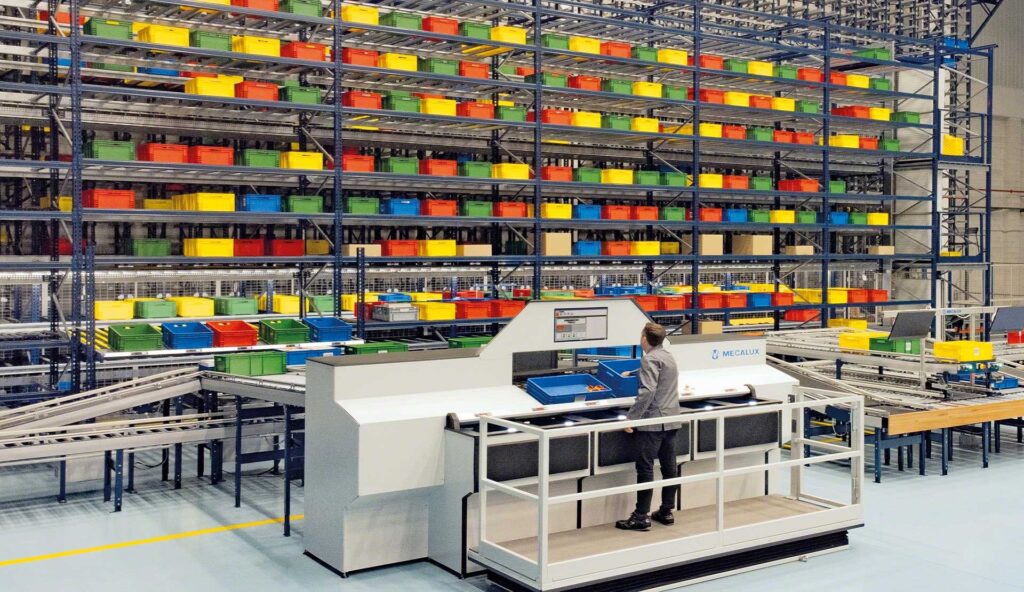
Getting orders out the door quickly and accurately is what makes a warehouse run smoothly. Slow fulfillment means delays, unhappy customers, and lost business. A well-designed warehouse conveyor system speeds up order processing, reduces mistakes, and makes everything flow smoother. Instead of relying on manual labor for every step of the process, conveyors move goods where they need to go—faster and with fewer errors.
Speeding Up Material Handling
Moving products efficiently inside a warehouse is just as important as getting them to customers on time. Warehouse conveyor systems automate this movement, reducing the time it takes to pick, pack, and ship items. Instead of workers carrying boxes or pushing carts, conveyors transport goods directly from storage to packing stations or loading docks.
Automation means fewer slowdowns and fewer mistakes. Manual handling takes time and can lead to misplaced items or shipping errors. With a conveyor system, products follow a set path, reducing unnecessary movement and keeping everything on schedule. This setup makes it easier to meet tight shipping deadlines, especially for warehouses handling high order volumes.
Improving Order Accuracy
Speed is essential, but accuracy matters just as much. A conveyor system keeps products organized, moving them along a designated route so they arrive at the right location. This reduces the risk of human error—like sending the wrong item to a packing station or misplacing inventory.
Integrating conveyor systems with warehouse management software improves accuracy even further. Scanners and tracking technology monitor where each item is in real time. If an item is missing or out of place, the system alerts workers before it becomes a bigger issue. Fewer errors mean fewer returns and exchanges, saving time and money while keeping customers happy.
Handling High-Order Volumes
Warehouses need to process more orders than ever, especially with the rise of e-commerce and fast shipping expectations. Handling a high volume of orders without the right systems can cause bottlenecks and slow everything down.
A warehouse conveyor system helps eliminate these delays by keeping products moving continuously. Orders move through picking, packing, and shipping without unnecessary stops. This steady flow increases throughput, allowing more orders to be processed in less time. For businesses dealing with seasonal spikes or high-demand periods, conveyors help manage the workload without requiring extra labor or temporary storage adjustments.
Cutting Down On Labor Costs
Labor is one of the most significant expenses in warehouse operations. When workers have to manually transport goods across a facility, productivity drops, and costs rise. Conveyor systems reduce the need for manual lifting and carrying, cutting down on labor expenses while improving efficiency.
Instead of hiring more workers to keep up with demand, warehouses can reassign employees to more valuable tasks like quality control, customer service, or inventory management. Reducing the amount of heavy lifting also lowers the risk of workplace injuries, creating a safer environment for employees. Over time, the savings in labor costs and reduced injury claims add up, making conveyor systems a smart investment.
Adapting To Changing Warehouse Needs
One of the best things about modern conveyor systems is their flexibility. Warehouses constantly evolve; new product lines, increased order volumes, and changing layouts require adjustments. Conveyor systems can be customized to fit these changes, whether adding new sections, rerouting existing conveyors, or integrating with other automation technologies like robotic pickers or automated guided vehicles (AGVs).
Portable and modular conveyor systems are useful for businesses that experience seasonal fluctuations. During peak seasons, additional conveyors can be installed to keep up with demand, then removed or reconfigured when order volumes return to normal. This adaptability makes it easier for warehouses to scale operations without unnecessary downtime.
Final Thoughts
Warehouses that rely solely on manual processes struggle to keep up with growing customer demands. Orders take longer to process, accuracy suffers, and labor costs climb. Investing in a warehouse conveyor system offers long-term benefits that outweigh the initial setup costs.
Conveyor systems are a game-changer for warehouses looking to improve efficiency and stay competitive. They speed up fulfillment, cut down on errors, and make better use of warehouse space to help businesses deliver faster, work smarter, and grow faster.


